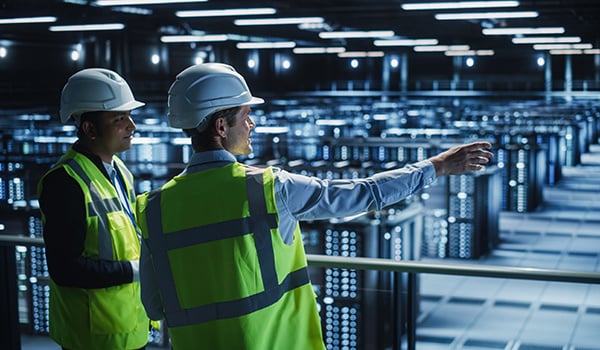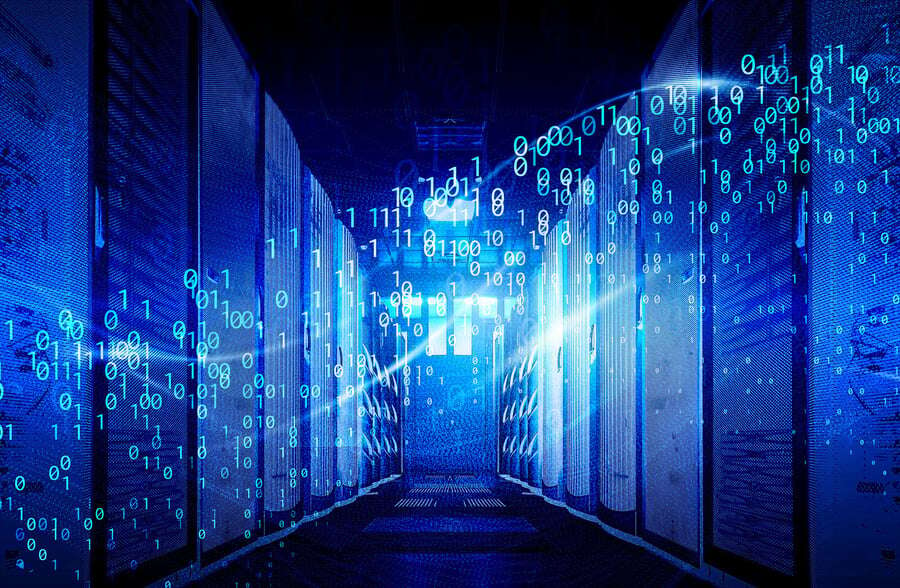As artificial intelligence (AI) accelerates the demand for compute power, data centers are evolving into the industrial infrastructure of the digital age — the “AI factories” powering tomorrow’s economy. But deciding where to build these high-performance facilities is no simple task.
“Choosing where to build new data centers is a big decision with long-term consequences,” writes Data Center Knowledge editor Drew Robb.
Location influences everything: from power availability and construction costs to permitting, grid integration, tax exposure and long-term scalability. With new megaprojects launching every month, the pace is fast — and the stakes are high.
“Data centers are today’s gold rush,” says Shark Tank’s Kevin O’Leary, during a keynote at Data Center World 2025. “AI is in high demand, and the strongest market is in companies of 5 to 500 employees.”
At Hexatronic Data Center, we help clients design, connect and scale digital infrastructure. Here’s what you need to know about where and how the next generation of AI data centers is taking shape.
Power First, Everything Else Second
Power isn’t just a constraint — it’s the single most important factor in AI data center site selection. AI workloads are energy-intensive, pushing existing grid infrastructure to its limits.
“Many factors influence data center location, but power dominates them all currently,” wrote Robb.
The latest research on data centers power:
- AI is expected to drive over 50 percent of global data center capacity and 70 percent of revenue by 2030.
- Traditional facilities typically run at 20–50 MW. AI factories demand 300–500 MW or more per campus.
- By 2030, up to 35 GW of data center power will be self-generated, due to grid limitations.
Emerging strategies include tapping into stranded natural gas, investing in private power generation or partnering with utilities on grid-flexible designs. The goal: secure scalable, sustainable power — fast.
“As AI reshapes the digital economy, data center operators face a new imperative: follow the power. Whether in West Texas, Alberta or Pennsylvania, tomorrow’s AI infrastructure won’t just go where the demand is — it will go where the energy flows and the policies welcome it,” concluded Robb.
Explosive Growth in New Markets
AI workloads are reshaping the geography of digital infrastructure. Traditional hubs like Northern Virginia and Silicon Valley face capacity constraints. Newer markets are surging in response to land, power and fiber availability.
“New analyst reports from CBRE, PwC and Synergy Research paint a picture of an industry at an inflection point — balancing explosive expansion with evolving challenges in power availability, cost pressures and infrastructure investment,” wrote Matt Vincent in Data Center Frontier.
U.S. Markets to Watch:
- Northwest Indiana: From 213 MW to 2.4 GW in under a year
- Pennsylvania: Jumped from 404 MW to 4 GW in 2024
- Kansas City Metro: Added 3 GW in 2024 alone
- Kentucky: Saw 690 MW of growth last year
- West Texas: Crypto-mining infrastructure is converting to AI factories
- West Virginia: Streamlined land permitting to attract new builds
- North Carolina: Rich in fiber connectivity, with strong colocation opportunities
Global Hotspots:
- Alberta, Canada: From 174 MW to 6.2 GW in a year (home of the $2B “Wonder Valley” off-grid AI campus)
- Vietnam: Added 1 GW of new capacity
- Milan, Italy: Expanded by 1+ GW
- Australia: Added 4.3 GW in 2024
Policy, Permitting and Incentives
Power and land may be top priorities, but policy can make or break a project.
“Data centers are in the spotlight, and data center construction is increasingly a policy issue on lawmakers’ agendas at every level of government,” writes Tim Tuberville for construction platform Procore. “Developers face a rapidly shifting regulatory landscape and a spike in opposition to data center construction at the local, state and federal levels.”
Data center developers should closely evaluate:
- Permitting Environment: States like West Virginia and provinces like Alberta have fast-tracked processes.
- Grid Partnership Opportunities: AI factories that share or return power to the grid may gain favor from regulators.
- Incentives and Tax Exposure:
- U.S. tax incentives are limited and vary by state.
- Watch for utility-imposed load tariffs that may add significant costs.
- Land banking is becoming common, with hyperscalers acquiring acreage in advance to lock in favorable conditions.
“Understanding the tax, permitting, regulatory and zoning landscape of the jurisdictions in which a data center is located is critical in evaluating its viability,” says Tuberville. “Increasingly, so is understanding the political environment surrounding a site — in other words, whether the regulatory landscape is going to change and how.”
Connectivity Still Counts
While power dominates today’s headlines, connectivity remains essential. AI training and inference workloads require high-throughput, low-latency fiber. Markets with robust backbone access and proximity to major interconnection points continue to gain strategic importance.
And those markets with connectivity and access to energy sources are a win-win with Colby Cox, managing director for the Americas at DC Byte, saying “these locations are attractive as they also provide access to energy and fiber connectivity.”
Beyond Capacity: Speed and Scale Matter
The scale of development has shifted dramatically in just one year.
- In 2024, according to Cox, 35 gigawatt-scale data center projects were announced worldwide — compared to just three in 2023.
- 28 of those projects were in the U.S., with another 15 close behind in size.
- Operators must act quickly. In many regions, available capacity is already spoken for by colocation giants and hyperscalers.
Building the Future, Where the Power Flows
As the industry pivots to AI-centric compute, one message is clear: Follow the power.
“If the power won’t come to the data center, then the data center will go to the power,” said Omdia’s Vlad Galabov — and we’re seeing this play out in real time, from West Texas to Alberta.
Strategic site selection now depends on balancing speed to market, total cost of ownership, long-term energy strategy, and regulatory alignment.
Let’s Build Smarter AI Infrastructure Together
At Hexatronic Data Center, we specialize in future-ready infrastructure solutions that scale with your needs — from high-speed fiber connectivity to power-efficient systems and sustainable site design.
Thinking about where to build your next AI facility? Let’s talk about how we can help you connect, construct and compete in tomorrow’s data-driven economy. Contact us today to get the conversation started.








